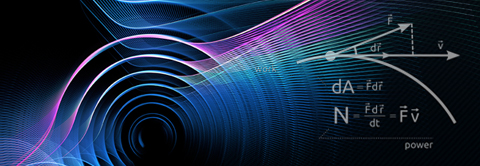| 날짜 | 2023-10-19 11:00 |
|---|---|
| 연사 | |
| 장소 | E6-2 #1322 |
10월 19일 목요일 개최 예정인 세미나 관련하여, 아래와 같이 안내 드립니다.
관심있는 분들의 많은 참여 바랍니다.
- Speaker : Dr. Ji Soo Lim (Physikalisches Institut and Würzburg-Dresden Cluster of Excellence ct.qmat, Universität Würzburg, Germany)
- Time : 2023.10.19(Thu). 11:00 ~
- Place : E6-2 #1322
- Title : "Emergent functionalities of iridium oxide films with different growth orientation"
- Abstract :
Iridium-based 5d transition metal oxides have been focused on realizing novel superconductivity or topological phases with an interplay between large spin-orbit coupling (0.3~0.4 eV) and short-range electron-electron interaction (~0.5 eV) [1, 2, 3]. The strontium iridate Ruddlesden-Popper compounds Srn+1IrnO3n+1 = ([SrIrO3]n, SrO) essentially consist of n SrIrO3 perovskite layers, intercalated by SrO layers and laterally shifted against each other such that no Ir-O-Ir bonds persist between neighbouring [SrIrO3]n blocks. As one veers away from the quasi-2D limit (Sr2IrO4, n=1) the Mott-insulating state breaks down as evidenced by the narrow-gap bilayer system Sr3Ir2O7 (n=2) hosting a collinear antiferromagnetic order and the metastable three-dimensional semi metallic and paramagnetic SrIrO3 (n=∞) [2, 4]. Additionally, SrIrO3 (001) films have been shown a highly active and stable catalyst by Sr leaching from the surface [5].
In this presentation, I present our findings on the epitaxial growth of SrIrO3 films with varying thickness on SrTiO3 (001) and (111) substrates. For the SrIrO3 (001) film, a critical thickness of 4 unit cells marks a dimensionality-controlled metal-insulator transition (MIT). This transition coincides with the emergence of octahedral rotation [6]. Below this threshold, we anticipate the presence of canted antiferromagnetism, where the net magnetic moment aligns in the in-plane direction. Additionally, the monolayer SrIrO3 (001) film exhibits a band structure akin to that of Sr2IrO4, a material often considered as a parent substance for unconventional superconductivity.
In case of SrIrO3 (111) film, it manifests a twinned superstructure with a periodicity of 3 unit cells for films thicker than 4 unit cells. Transmission electron microscopy (TEM) reveals that the interfaces between the 3-unit cell thick stacks consist of face-sharing octahedra with a larger Ir-Ir lattice spacing compared to within the stacks. This twinned superstructure aligns with the observed MIT at a critical thickness of 5 unit cells. In the SrIrO3 (111) films exceeding 5 unit cells, we observe a sign change of the magnetoresistance from positive to negative and the emergence of hysteresis loops in the anomalous Hall effect at about 10 K. These findings provide strong evidence for the existence of ferromagnetic phases.
Combined with theoretical and experimental results in our films, I explain electronic carrier properties of both SrIrO3 (001) and (111) films, corroborated by band structure calculation. Also, I discuss the microscopic origin of AHEs in relation to topological effects, paving the way for discovering the topological phases.







